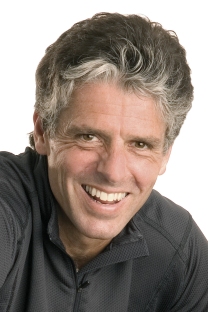By: Paul Carrozza
Men’s Health. What does it mean anyway? I have been an athlete and runner my entire life. Does that make me healthy? Well, that’s not the only measurement of good health. I have been working on my health my entire life. I take vitamins, eat organic foods, stay away from processed foods, and avoid fried foods. As I have aged, my food choices have continued to change. I eat less sugar, less dairy, less red meat, less white meat. With these changes, I feel better and better. So, I do more than just run for fun and exercise.
Being healthy is being without disease… Disease is just that…Dis… Ease… Annual Check-ups can eliminate or identify the “diseases” that need to be addressed. If you are clear of no disease, and little else is bothering you, are you still healthy?
On the surface, I say if you are at your ideal body weight, have normal bone density, normal blood pressure, no depression, good cholesterol levels, good muscle mass, no tightness, and are in good enough condition to to out and enjoy the recreational activities you love, then you are probably pretty healthy.
What keeps us from being healthy or in optimum health? It’s the modern lifestyle we live! No physical activity, minimal time in the sun, minimal time in nature, minimal sweating, passive transportation, too many processed foods, weak and tight muscles, we’re overweight, deconditioned from heat, sun and strenuous activity. So what’s the outcome of this modern, unhealthy lifestyle? Disease. Or, Dis…Ease.
Other things that contribute to your Dis…Ease are low testosterone levels, low self-esteem or just not feeling great about yourself. Being stuck in a rut – the same old thing every day, and you aren’t sure how to get out of it. Believe it or not, exercise isn’t the answer for everyone.
The answer to good health is finding things that you are passionate doing and preparing for them. The annual climb to a fourteener in Colorado, hiking the Grand Canyon, running a marathon, doing a triathlon, playing in a recreation sports league, or finding a professional coach or trainer to assist you with your passion. Or, maybe join a team of others who share your passion, and head out on the journey of a lifetime to optimum health.
So, discover the one thing that you would love to do. The one thing you can be passionate about and get yourself out and DO IT! One way to discover what you like to do is to remember what you did with your free time when you were five, seven or ten years old. Maybe those years bring back activities you enjoyed.
My advice for good men’s health is to live life through motion and in the great outdoors. When you find your weekend passion, your days and weeks will have purpose and you will find a path to good health that fits your own passion and lifestyle.
The most common sign of breast cancer in men is a painless lump or thickening in the breast or chest area. This Father’s Day, talk to the men in your lives about the importance of taking care of their health.

Paul Carrozza
Paul Carrozza, an Austin running specialist, has coached thousands of runners, non-profit organizations and entrepreneurs over the years. He is most proud of RunTex, being a place where people could come together to achieve their goals.
Paul is committed to developing superior programs and events that contribute to the economic growth in the community and help increase the quality of life in the greater Austin area. The Austin Running Community is a testament to Paul’s passion for providing access for healthy living to the entire community.
Paul is co-founder of the Marathon Kids Program, which successfully helps over 500,000 children per year learn the joy of running. He served two terms on the President’s Council on Physical Fitness and Sports during the George W. Bush Administration, is the Co-Chair for the Governor’s Advisory Council on Physical Activity, the Co-Founder and former Chair of the Austin Mayor’s Fitness Council, served on the EMS Board, Texas Medical Board District Review Committee, and he is the founder of Shoes For Austin.
Paul is the Cross Country and Track Coach at St. Stephen’s School and the Interim Executive Director of Boneshaker Project. He coaches small groups from middle school to mature adults who want to have their mind, body and spirit prepared for a full active, purposeful life.
Like what you read? Share the love!

